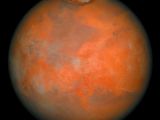Have you ever noticed how both Mars and Venus are ranked as planets rather similar to Earth, but never to each other? The ESA believes it's about time it put an end to this situation and gave the task to both the Mars Express and the Venus Express, to conduct simultaneous probing investigations to establish whether or not the two planets can be compared with each other. Well, at least in the matter of the atmosphere, that is.
When you have two so different orbiters around two distant planets, but both using identical instruments, what good analysis can be made except for data comparison. Both are equipped with an Analyser of Space Plasmas and Energetic Atoms - ASPERA - instruments, with which they can probe the magnetic regions of the planet to study the movement of electrically charged particles escaping into space. From time to time, whole atoms escape into space, and the two ASPERA instruments can finally start their comparison.
For example, the two Express probes have shown that Mars loses ten times more atoms from its atmosphere than Venus. Knowing the amount of matter lost into space, one could be able to accurately construct a model of the atmosphere as it was back in the past, to establish the rough planetary clime conditions.
According to David Brian from the University of California, one of the investigators for Venus Express and Co-Investigator for ASPERA on Venus and Mars Express, although the two are separated from each other by a distance more than two and a half astronomical units, they seem to be relatively similar in the matter of flow of charged particles, as the atmospheres are ionized by the action of the solar wind.
On the other hand, on our planet the situation is rather different, as the powerful magnetic field stops the solar wind from directly interacting with the atmosphere. Secondly, the ionization of the atmosphere determines the apparition of a second magnetic field, only weaker than that produced by the planet itself. The most visible aspect of their atmospheres is that they do not look alike in any way, since Venus' atmosphere is rather dense and thick, impossible to peek towards the surface, while Mars has a thin transparent atmosphere. Only the magnetic fields are comparable.
Tielong Zhang, from the Institut f?r Weltraunforschung, ?sterreiche Akademie der Wissenschaften and principal investigator for Venus Express, says that both have an ionosphere residing 250 kilometers above the surface, in the form of a shell of electrically-charged particles which is sustained by the power inputed by the light coming from the Sun. The distance between the Sun and Venus creates stronger secondary magnetic fields, while on Mars the effect is less than that on Venus due to the drop in solar wind density with distance.
Mars is the losing planet in this case, as a weaker magnetic field only leads to the ejection of more and more gas from the atmosphere to space. In some areas of the surface, strong magnetic field are still able to protect small pockets of the atmosphere, but eventually it will also be lost to space in the far future.

 14 DAY TRIAL //
14 DAY TRIAL // 
